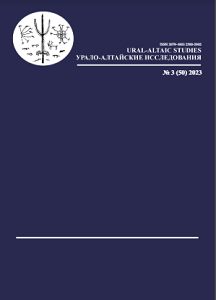Шкалы, меры, конечные точки: наблюдения о композициональной природе предельности - На материале карачаево-балкарского языка
Scales, measures, and endpoints: a few observations on the calculation of telicity. Evidence from Karachay-Balkar
Author(s): Sergei TatevosovSubject(s): Language studies, Theoretical Linguistics, Turkic languages
Published by: Институт языкознания Российской академии наук
Keywords: scalar structure; actionality; telicity; degree achievments; manner of motion verbs; measure expressions; endpoint expressions; Karachay-Balkar;
Summary/Abstract: This article examines the range of interpretations of degree achievements and manner of motions verbs in combination with measure expressions (‘one hundred meters’ in ‘run one hundred meters’; ‘ten degrees’ in ‘heat by ten degrees’) and endpoint expressions (‘to the school’ in ‘run to the school’; ‘to ninety degrees’ in ‘heat to ninety degrees’). There are two typologically attested interpretational options. One is realized in English and similar languages: both types of predicates show obligatory telicity with both types of expressions. The other option is: obligatory telicity only obtains with measure expressions, whereas endpoint expressions yield variable telicity. This latter pattern is found in Karachay-Balkar, a Turkic language spoken in the Caucasus. The article offers an analysis which treats both degree achievements and manner of motion verbs as denoting measure of change functions. I argue that there are two derivations in which such verbs can participate. The first derivation creates a function that takes a degree of change as an argument. This is a path to obligatory telicity. This is how predicates with measure expressions are derived in both languages; endpoint expressions in English are interpreted in a similar way. In Karachay-Balkar, however, a different derivation is available for endpoint expressions: they provide the maximal degree on a scale associated with a measure of change function. The scale ends up being totally closed, which makes available both minimum and maximum standards of comparison [Kennedy, Levin 2008]. The former creates an atelic, the latter a telic predicate; the variable telicity is thus accounted for.
Journal: Урало-алтайские исследования
- Issue Year: 2023
- Issue No: 03 (50)
- Page Range: 97-122
- Page Count: 26
- Language: Russian

